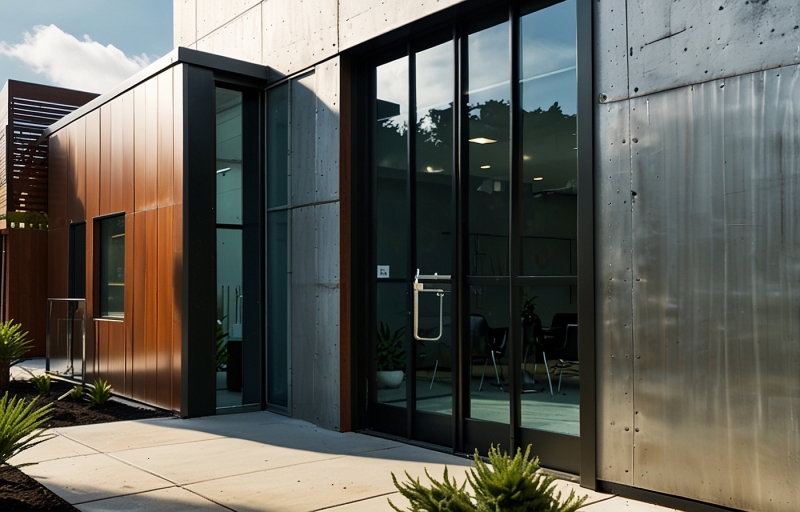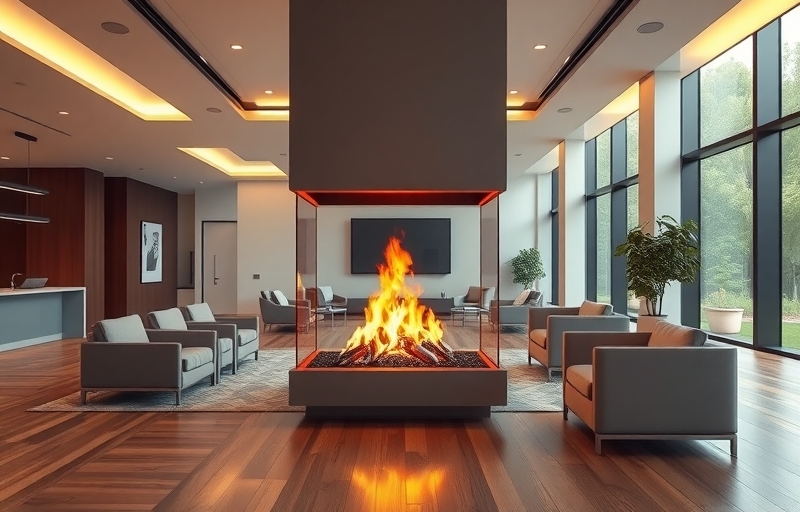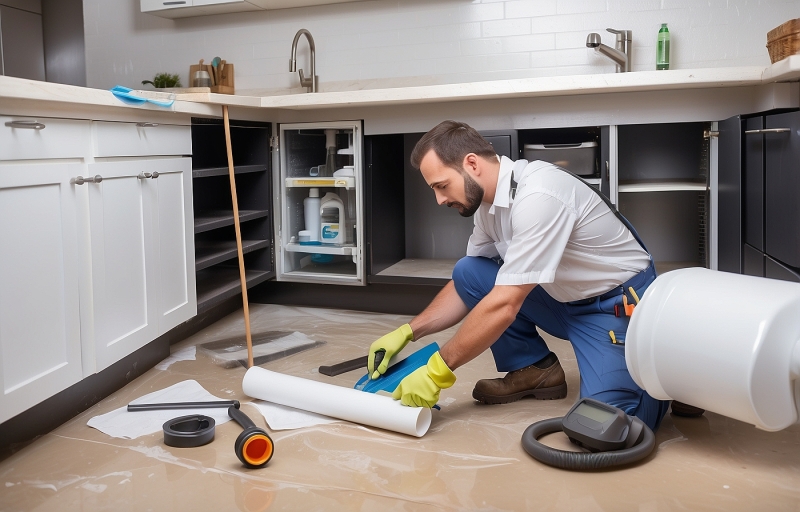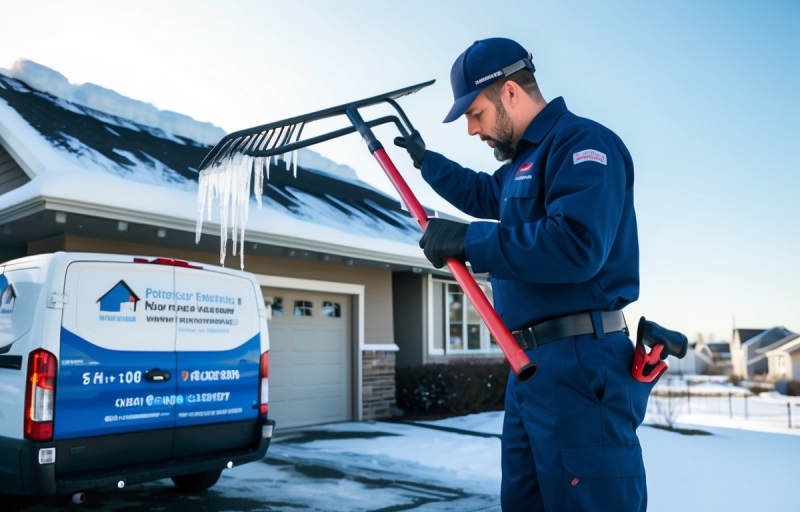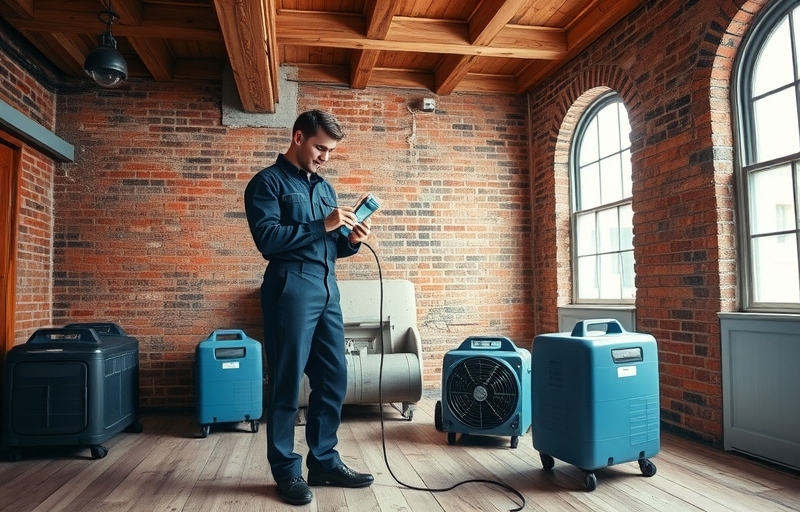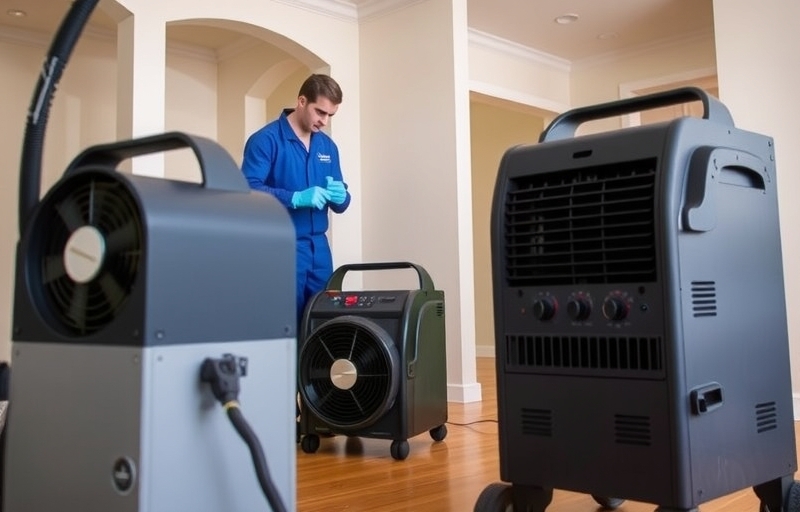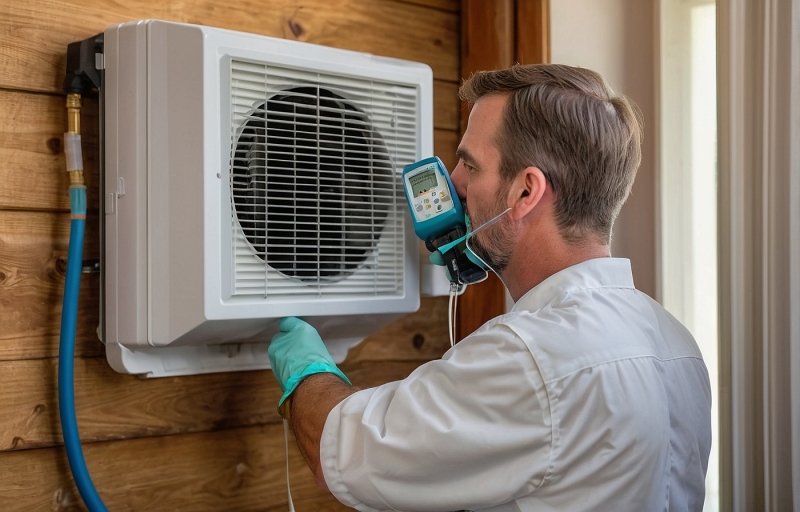When it comes to protecting your home or business, choosing resistant materials for your property is crucial. At Projekt Property Restoration, we know how important it is to build with strength and resilience in mind. Have you ever wondered which materials can truly withstand water, fire, and mold damage? Let’s explore how the right choices today can save you from costly repairs tomorrow.
Concrete, steel, fiber cement, and fire-rated glass are among the top resistant materials you can use. Each of these offers unique advantages, from superior fire resistance to exceptional durability against moisture and mold. In this article, we’ll break down the best materials for different parts of your property, backed by insights from industry experts like Dr. Joseph Lstiburek, a leading authority in building science.
But that’s just the beginning! There are even more innovative materials and smart solutions you need to know about. So, without wasting another second, let’s dive into the world of the most reliable resistant materials to keep your property safe and sound!
Understanding Resistant Materials
Resistant materials are specially engineered substances designed to withstand environmental stress, wear, and damage in property construction. They play a crucial role in enhancing the durability, safety, and value of any building. By incorporating these materials, property owners can significantly reduce maintenance costs and extend the lifespan of their investments.
Choosing the right resistant materials ensures protection against elements like water, fire, and mold. For instance, concrete offers exceptional strength and longevity, making it ideal for foundations and structural walls. Steel provides unmatched resistance to both fire and corrosion, ensuring a safer environment. Treated wood resists pests and moisture, while modern composites combine durability with aesthetic appeal.
Using resistant materials is not just about immediate protection; it’s a smart long-term strategy. It safeguards your property against unforeseen damages and costly repairs. To learn more about how we prioritize quality materials, visit our about page. If you’re facing issues like water intrusion, our water damage services can help restore and protect your home effectively. Investing in the right materials today ensures a safer, stronger property for years to come.
Types of Resistant Materials for Properties
Fire-resistant materials offer crucial protection against devastating fires. Gypsum boards, treated with fire-retardant additives, slow down heat transfer. Concrete, naturally non-combustible, also provides excellent fire resistance. These materials help property owners minimize structural damage and enhance safety.
Water-resistant materials are essential for preventing costly repairs. Water-resistant concrete and treated wood can withstand prolonged moisture exposure. Additionally, vinyl flooring resists water infiltration, making it ideal for basements and bathrooms. Using these materials protects your investment and reduces the risk of mold growth.
Impact-resistant materials safeguard properties from physical damage. Tempered glass, for instance, resists shattering during storms or accidents. Reinforced steel doors and fiber-cement siding also offer superior durability. Choosing impact-resistant options ensures long-term property resilience and lower maintenance costs.
Weather-resistant materials defend against harsh environmental conditions. Fiber-cement siding resists rain, wind, and UV rays. Metal roofing, another strong choice, withstands heavy snow and hail. These materials help maintain your property’s appearance and structural integrity year-round.
For more insights, explore our blog or learn about our comprehensive services. Protect your property with the right resistant materials today.
Fire-Resistant Materials
Materials designed to resist fire offer exceptional durability and protection during extreme heat exposure. They maintain structural integrity, slow fire spread, and minimize property damage. Fire-rated glass, for instance, can withstand temperatures up to 1600°F without shattering. Concrete, another reliable option, resists fire naturally due to its low thermal conductivity. Brick also performs exceptionally well, often enduring hours of direct flame without significant damage.
Intumescent coatings add another layer of defense. When exposed to high temperatures, they expand and form an insulating barrier. This reaction delays heat transfer and protects underlying materials. Many modern buildings now integrate these solutions to meet strict fire safety codes.
A notable example is the Grenfell Tower refurbishment in London, where fire-resistant materials in certain sections slowed the fire’s progression. Similarly, during the 2018 California wildfires, homes built with concrete and brick survived while others were reduced to ashes. Choosing the right materials can make a life-saving difference.
To learn more about our expertise, visit our services page. You can also explore our gallery for real-world examples of successful restorations.
Water-Resistant and Waterproof Materials
Water-resistant materials can repel water to a certain extent, but they are not entirely impervious. Waterproof materials, however, completely block water from penetrating. Understanding this difference is crucial when selecting the right protection for your property.
Treated wood is a popular choice for outdoor structures because it resists moisture and decay. Waterproof membranes, often used in roofing and basements, create a solid barrier against water infiltration. Additionally, water-resistant paints add an extra layer of defense to walls and surfaces, helping to prevent mold and mildew growth.
In flood-prone or humid regions, using these materials is essential. They help maintain structural integrity and reduce costly repairs. Without proper protection, properties are vulnerable to extensive water damage and mold infestations. Choosing the right materials can save homeowners time, money, and stress.
For more information about our specialized solutions, visit our services page. Protecting your property starts with smart material choices and expert guidance. Investing in quality materials today ensures a safer, more resilient home tomorrow.
Impact-Resistant Materials
Materials that resist impact are engineered to absorb and disperse energy without breaking. Their strength, flexibility, and durability make them essential for protecting properties from severe damage. Choosing the right materials can significantly reduce repair costs and enhance safety.
Reinforced concrete, for instance, combines steel and concrete to create a structure that withstands heavy blows. Laminated glass, made by bonding layers of glass with plastic, prevents shattering during storms or accidents. High-impact siding, often crafted from fiber cement or engineered wood, shields homes from flying debris and harsh weather.
To ensure reliability, these materials undergo rigorous testing. Standards like ASTM and ANSI certify products based on their ability to resist force and pressure. Meeting these certifications guarantees that the materials perform as expected under extreme conditions.
If you want to learn more about our commitment to quality, visit our mission page. For a closer look at our work, explore our gallery. Investing in impact-resistant materials today can save you from costly repairs tomorrow.
Weather-Resistant Materials
Materials designed to endure harsh weather conditions offer unmatched protection for your property. Fiber cement siding stands strong against UV radiation, heavy winds, and snow accumulation. Metal roofing, known for its durability, resists corrosion even in salt-laden coastal air. Weather-treated wood also performs exceptionally well, maintaining its integrity through fluctuating temperatures and moisture exposure.
Specialized coatings and treatments further enhance these materials’ resilience. Protective sealants block moisture infiltration, while UV-resistant finishes prevent fading and cracking. Additionally, anti-corrosion treatments extend the lifespan of metal components, making them ideal for long-term use.
Choosing the right materials is crucial for safeguarding your investment. Explore our services to find expert solutions tailored to your needs. For more insights, visit our detailed blog and stay informed about the best practices in property protection. Investing in high-quality, weather-resistant materials ensures your home remains secure and visually appealing, no matter the climate challenges.
Choosing the Right Resistant Materials for Your Property
Start by evaluating your property’s location and climate. Coastal areas demand corrosion-resistant materials, while colder regions need freeze-proof options. Next, consider your property’s type. A commercial building may require sturdier, industrial-grade materials compared to a residential home.
Balance is crucial. Weigh the cost, aesthetics, and performance of each material carefully. High-end materials may offer better durability but could strain your budget. Meanwhile, cheaper options might compromise long-term performance. Always aim for materials that blend strength with visual appeal.
Consulting with experts can save you costly mistakes. Reach out to professionals who understand local building codes and environmental factors. You can explore our services to find specialists who can guide you. They can recommend the best solutions tailored to your specific needs.
Additionally, review past projects to gauge material performance. Our gallery showcases examples that might inspire your choices. Finally, never hesitate to ask questions. A well-informed decision today ensures your property remains protected for years to come.
Installation and Maintenance of Resistant Materials
Proper installation of resistant materials starts with thorough surface preparation. Always clean, dry, and level the area before applying any product. Use manufacturer-recommended tools and techniques to ensure a secure fit. Additionally, hiring experienced professionals can significantly boost the material’s performance and lifespan.
One common mistake is rushing the installation process. Skipping steps or using incorrect adhesives can compromise the material’s resistance. Another frequent error is ignoring environmental factors like humidity or temperature, which can affect bonding and durability. Always follow detailed guidelines to avoid costly repairs later.
Routine maintenance is crucial for preserving resistant materials. Regularly inspect surfaces for cracks, warping, or signs of wear. Promptly address minor issues before they escalate into major problems. For more detailed advice, explore our blog where we share expert tips.
Cleaning with non-abrasive products also helps maintain integrity. Avoid harsh chemicals that can degrade protective coatings. If you need professional support, check out our full range of services designed to keep your property in top condition. Consistent care ensures your investment remains strong for years to come.
Cost Considerations and Return on Investment
Investing in resistant materials may seem costly upfront, but the long-term savings are substantial. Durable options often reduce the need for frequent repairs, saving thousands over the years. Additionally, many insurance companies offer lower premiums for properties built with resilient materials. This benefit alone can offset initial expenses within a few years.
Moreover, properties featuring high-quality, resistant materials typically see a significant boost in market value. Buyers are willing to pay more for homes that promise lower maintenance and better protection. In disaster-prone areas, this advantage becomes even more critical.
Financing options are also available to ease the burden of upfront costs. Some government programs and private lenders offer incentives for using sustainable and durable materials. Exploring these options can make upgrading more affordable.
If you want to learn more about our expertise, visit our about page. For a full list of what we offer, check out our services. Choosing the right materials today ensures peace of mind and financial benefits for years to come.
Future Trends in Resistant Materials
Innovations in resistant materials are reshaping the future of property construction. Self-healing concrete, for instance, can automatically repair cracks, extending a building’s lifespan. Meanwhile, nanotechnology coatings offer superior protection against moisture, corrosion, and UV damage. In addition, sustainable materials are gaining traction, reducing environmental impact without sacrificing durability.
Climate change is accelerating the need for these advancements. Rising temperatures, stronger storms, and increased flooding demand materials that can withstand extreme conditions. As a result, developers are prioritizing solutions that offer both resilience and sustainability.
Looking ahead, these trends will significantly influence how properties are built and renovated. Builders will increasingly rely on smart materials to minimize maintenance costs and enhance safety. Homeowners seeking reliable protection can explore our services for expert solutions. Moreover, understanding the importance of durable construction is crucial; visit our our mission page to learn more.
Ultimately, the integration of advanced resistant materials will lead to smarter, stronger, and more eco-friendly properties. Those who adapt early will enjoy long-term benefits, from reduced repair costs to improved property value.
Frequently Asked Questions (FAQs)
When selecting materials for a home, concrete, steel, and brick rank among the most durable. To verify fire resistance, always check for ASTM E119 or UL 263 certifications. Many resistant materials, like recycled steel and composite lumber, are also environmentally friendly. Fortunately, they can be seamlessly integrated into remodeling projects without major structural changes.
While resistant materials often cost more upfront, they save money long-term through reduced repairs. Look for certifications like GREENGUARD, LEED, and FM Global Approval when choosing products. Maintenance needs are minimal; most materials require only occasional inspections and cleaning. In fact, using resistant materials can lower property insurance premiums due to reduced risk.
Additionally, government incentives, such as tax credits and rebates, are sometimes available for eco-friendly, resistant upgrades. Investing in these materials can significantly boost your property’s resale value. For more insights, explore our detailed FAQ section or view examples in our gallery. Choosing the right materials today ensures your property remains safe, efficient, and valuable for years to come.

